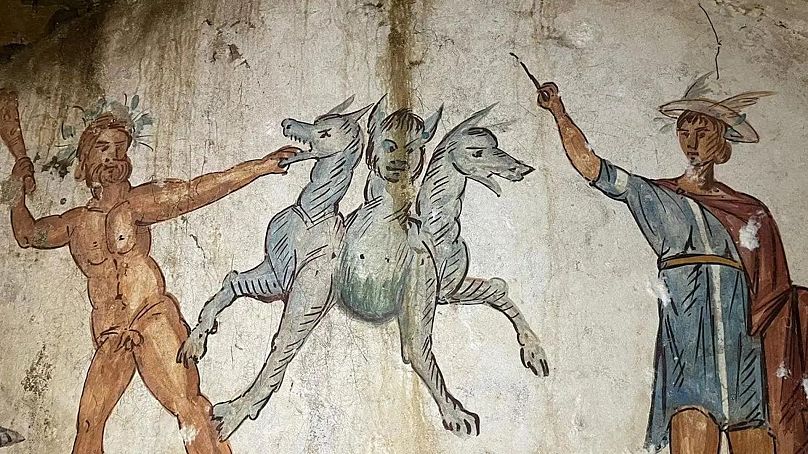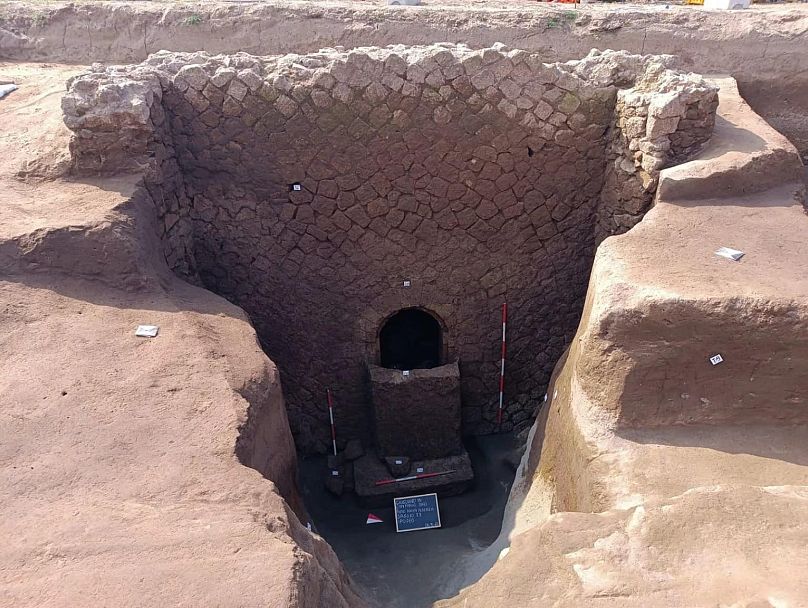Preliminary assessments suggest that the tomb dates back approximately 2,000 years to the Republican and Imperial Roman ages.
 ADVERTISEMENT
ADVERTISEMENT
A remarkably well-preserved chamber tomb has recently come to light within cultivated land situated in the municipality of Giugliano in Campania, near Naples, during an archaeological survey in advance of updates to the city water supply system.
Early examinations estimate the tomb dates back approximately 2,000 years.
The tomb's entrance was sealed with a tuff slab, and upon entry, the chamber revealed stunning frescoes adorning its walls.
Among these frescoes is a notable representation of the three-headed dog, Cerberus, which has led to the tomb being aptly dubbed the 'Tomb of Cerberus.'
Cerberus, also known as the “hound of Hades,” famously guarded the gates of the Underworld to prevent the souls of the departed from escaping.
The depicted scene portrays the culmination of Heracles' twelve labours, during which he successfully captured Cerberus.
The tomb also contains depictions of mythological scenes featuring ichthyocentaurs, beings with the upper bodies of humans, the fore-legs and lower anterior halves of horses, and fish-like tails.
Archaeologist Valentina Russo, who was present during the discovery, explains "The excitement was enormous ... the screams, the hugs, us, the workers, finding something like this doesn't happen every day."
Full excavation of the chamber tomb is currently in progress, and archaeologists intend to explore the broader necropolis surrounding the tomb too.












